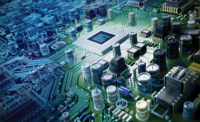When the movie Back to the Future Part II came out in 1989, the screenwriters had to imagine the world in 2015. The resulting movie shows a world with fax machines, self-tying shoes, and hover boards — proof that predicting the future is dicey business.
It does raise the question, though, about what the future holds for controls and BAS. What will systems look like in 10, 20, or 30 years? Looking back over the last 30 years, we have seen dramatic changes in control systems from those that were primarily pneumatic or electro-mechanical to systems that are now digital and follow open standards. Over the last decade, there has continued to be innovation, but at a slower pace. Recent changes are more incremental than transformational with the introduction of new wireless products as well as solutions for fault detection and analytics.
So, what does the future hold for controls and building automation? Who knows, but here are my best guesses for what to expect to see in the systems being designed in 2045.
- Connected. It is a fairly safe assumption that the trend toward the “Internet of Things” will continue and we will get to the point where a wired or wireless connection will be available for even the simplest of devices. Imagine a system where not just equipment such as a chiller is part of the control system, but even nodes such as individual light switches and fixtures will be addressable.
- Distributed. With the ability to readily connect devices, there will come the need to integrate them and share data and control strategies. This can now be done with or without what we think of today as a controller. For example, the controls for an air handler might consist of a network of smart sensors and actuators that implement the necessary sequence between them with no controller needed.
- Self-configured and documented. Solutions will be needed to allow the myriad of devices within a building to readily connect, share information, and operate in an optimal manner. Of course, this will also need to be both readily discoverable so that building data can be integrated to grid and enterprise systems, but at the same time it will need to protect privacy and security.
- Standardized. By necessity, future systems will all need to follow open standards. Global internet and information technology standards will be dominant, but there will also be the need to have application specific standards as well to assure safe, reliable, and efficient operation.
How accurate are these predictions? Without the use of a time machine, it is hard to say. We will just have to wait to go “back to the future.” ES



